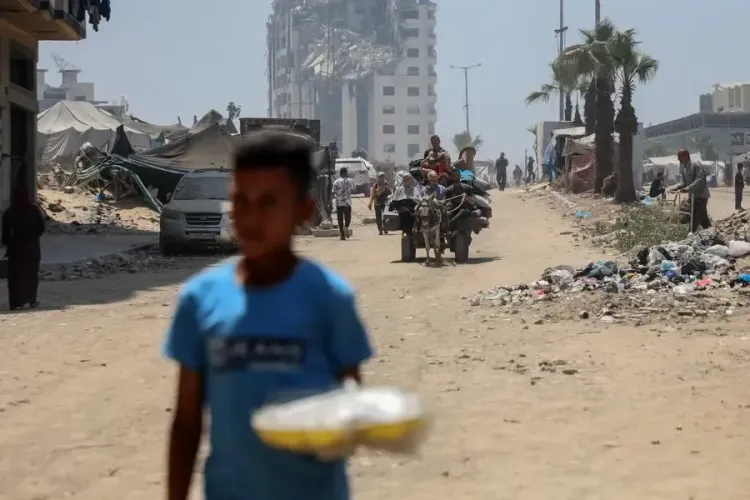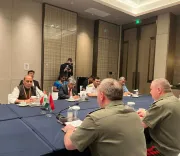Are Gazans Burning Plastic Waste to Cook in Makeshift Shelters?

Synopsis
Key Takeaways
- Burning plastic waste is a desperate measure taken by civilians in Gaza due to lack of resources.
- The humanitarian crisis is exacerbated by ongoing violence and limited access to aid.
- Casualties continue to rise, particularly among those seeking food and assistance.
- Efforts to coordinate humanitarian aid are often met with challenges and restrictions.
- Education is severely impacted, with thousands of students unable to take important exams.
The United Nations, June 25 (NationPress) - Civilians in Gaza are facing yet another peril, compounded by hunger, gunfire, and ongoing bombardment: the act of burning plastic waste for cooking, according to UN humanitarian officials.
The UN Office for the Coordination of Humanitarian Affairs (OCHA) reported on Wednesday that "Shelling and bombing across the Gaza Strip continue to severely impact civilians, reportedly resulting in numerous casualties, particularly among those seeking aid."
"In the absence of fuel, cooking gas, and electricity, people are resorting to burning plastic waste," the report indicated.
OCHA emphasized that such fires, particularly in makeshift shelters or tents, pose significant safety and health risks for vulnerable family members, including children and the elderly, as noted by the Xinhua news agency.
The Red Cross Field Hospital in Rafah reported receiving a surge of 149 casualties, according to the International Committee of the Red Cross (ICRC), on Tuesday.
"All responsive patients reported injuries sustained while heading to an aid distribution site," the ICRC stated.
"Sixteen individuals were declared dead upon arrival, with three more succumbing to their injuries shortly thereafter. Most of the patients reportedly suffered gunshot wounds."
Casualties among Gazans seeking food typically occur at distribution centers managed by the non-UN, US-operated, and Israeli-approved militarized Gaza Humanitarian Foundation.
The ICRC revealed that it had to activate its mass casualty protocols 20 times since May 27, remarking, "The scale and frequency of these incidents underscore the intolerable dangers civilians encounter while trying to access assistance."
The UN Population Fund noted that 80% of critical care units, including those for childbirth, are at risk of closure, amidst a daily average of 130 births in Gaza.
Despite community kitchens managing to prepare over 200,000 meals daily this week, this figure represents a drastic decline of about 80% compared to over 1 million meals distributed daily at the end of April, leaving people on the brink of famine.
"To ensure the orderly distribution of aid, supplies must be routed daily through multiple crossings and land routes simultaneously, guaranteeing a steady and reliable flow of essential support," the Office stated.
OCHA also reported that efforts to coordinate 15 humanitarian movements within Gaza on Tuesday were met with limited success, as only four were fully facilitated by Israeli authorities. Seven other attempts were denied, obstructing teams from trucking water, repairing roads, or retrieving broken vehicles.
According to the Office, three other missions received initial approval but faced impediments on the ground, with one ultimately completed on Wednesday while another had to be canceled.
OCHA mentioned that tens of thousands of students could not participate in this year's general secondary examination, which was scheduled for this week, due to insecurity, displacement orders, and internet connectivity issues across Gaza. Last year, approximately 39,000 high school students in Gaza were similarly unable to take the exam.









